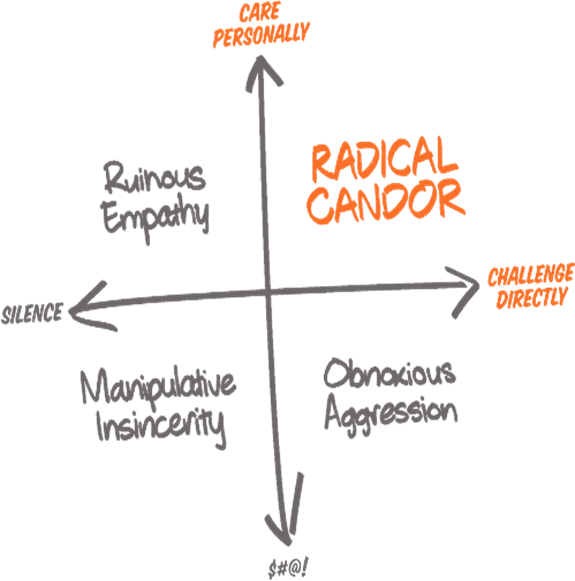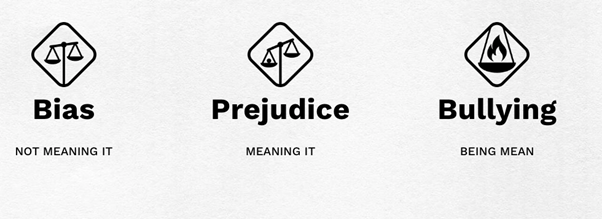Ruinous Empathy: Kim Scott on dismantling “the most common form” of ineffective feedback
- 6 Min Read
Radical Candor creator Kim Scott has found Ruinous Empathy to be the most prevalent form of bad employee feedback. She shares frameworks for giving kind, clear, specific, and sincere feedback as well as for disrupting bias, prejudice, and bullying, to prevent leaders from inadvertently embedding ineffective performance management practices
- Author: Kim Scott
- Date published: Sep 21, 2023
- Categories

Our human instinct is to be nice. However, when it comes to delivering structured performance management and feedback, this becomes an issue. Kim Scott, the creator of the renowned Radical Candor model, has found the most significant problem at nearly every company she speaks to is ‘Ruinous Empathy’, more so than ‘Manipulative Insincerity’ and ‘Obnoxious Aggression.’

Ruinous Empathy, because of its disguise in positive intentions, requires greater attention than any other form of feedback. In this Q&A, Scott joins HRD to discuss methods for intentionally tackling Ruinous Empathy as a critical step to prevent bias, prejudice, and bullying from becoming ingrained in performance management structures.
1. Why do you think Ruinous Empathy is the most prevalent type of toxic feedback above Manipulative Insincerity or Obnoxious Aggression?
Kim Scott: I have a positive view of humanity. The truth is most people don’t want to hurt someone else’s feelings, and that’s the main reason why we make a mistake. But also, within Ruinous Empathy, there may be some seeds of Manipulative Insincerity because we don’t want to suffer any blowback from what we say.
I often talk about someone I managed called Bob. He was charming and funny. But his work wasn’t good enough. I would tell him he was smart, that we loved working with him, and that could he just make his work a little better. Part of it was Ruinous Empathy because I didn’t want to hurt his feelings. But there was also a bit of Manipulative Insincerity there because Bob was popular and if he got upset, maybe everyone would think I was a big you-know-what. Ruinous Empathy is the most common because we do care about each other, but with Manipulative Insincerity, the two go hand in hand.
2. How can HR leaders train their managers to avoid confusing inclusion and support with Ruinous Empathy?
Kim Scott: Sometimes people leave unconscious bias training feeling like it’s inevitable, so they’re not motivated to make any change. I recommend following up on this training with bias disruptors. There are three steps:
- Come up with a shared vocabulary: What’s the word or phrase that you’re going to use in the moment to disrupt bias? It gives people the ability to know what to say when they don’t know what to say.
- Teach people who have said something biased: Human beings are pattern makers, sometimes good, sometimes bad. Teach them what to say when their bias has been disrupted. Teach them to thank the person for pointing it out. Then either you either say I get it and I’m working on it. Or, and it’s much harder, I don’t get it. I’ve hurt someone and I’m ignorant. But we don’t want our feelings of shame to prevent us from noticing what we’re doing wrong.
- Have a shared commitment: It’s easy for HR leaders to talk about the importance of bias disruption, but we have to push through the discomfort. You don’t need to treat this as a federal offence. The goal is to disrupt the bias, not the meeting. Quickly point it out, agree to talk after the meeting, and then move on.
3. How should HR leaders differentiate between bias, prejudice, and bullying to deliver effective feedback?
Kim Scott: We conflate these things as though they’re the same thing. But they’re three very different things. Bias is not meaning it. It’s unconscious. Prejudice is a consciously held belief, usually reflecting some unfair and inaccurate stereotype. And bullying is being mean. Very often, when someone is bullying someone else, there’s no belief conscious or unconscious whatsoever. There’s just an effort to dominate.

Just having that simple framework, helps me figure out what to say. Because if it’s biased, I can wave the purple flag or use an ‘I’ statement: ‘I don’t think you meant that the way it sounded.’ If it’s a prejudice, you want to respond with an ‘it’ statement: ‘It is illegal,’ ‘It is an HR violation,’ or ‘It is ridiculous.’ And if it’s bullying, reply with a ‘you’ statement: ‘You can’t talk to them like that.’ The point of the ‘you’ statement is that you are not in a passive role, you’re in an active role, making the other person respond.
I think it’s important for HR people to design management systems that create consequences for bullying. Atlassian has a policy of ‘no brilliant jerks.’ It has a peer rating system. That means if you bully others, you get low ratings, you will not get a promotion, and eventually you will lose your job. This method adds to conversational consequences to include compensation consequences and career consequences for bullying.
4. What steps can HR take to make sure as they nudge people leaders to radical candor, they do not drift into Obnoxious Aggression?
Kim Scott: Hook into people’s desire to be nice. The easy way out of Ruinous Empathy is to say it in the harshest way possible. And that’s Obnoxious Aggression. I recommend that everyone shares their own ‘Bob’ story.
If our intentions are good, we want our actions to line up with our intentions. And Ruinous Empathy is an action that does not line up with your intention because it’s not kind to the person in the long run. And if people can tell themselves that story and label that story, then they remember it each time.
There’s an order of operations to Radical Candor. And it all starts with soliciting feedback. The more people practice hearing feedback, the more compassion they develop, and the more talent they develop, for delivering feedback in the right way. People have a misconception that Radical Candor is giving people criticism. It’s about soliciting criticism and giving praise before you give criticism. Radical candor gets measured not in the speaker’s mouth, but at the listener’s ear, so you want to pay attention to how your words land.
5. Do you foresee Ruinous Empathy to continue being the most prevalent type of toxic feedback in the future of work? Why or why not and what does this mean for HR?
Kim Scott: In real life or over video, when working with real people, Ruinous Empathy will continue to be the most prevalent. It’s a deeply ingrained human instinct to be Ruinously Empathetic because for most of human evolution if we took an interpersonal risk that resulted in banishment from the group, we were left for dead or to survive on our own.
But on social media, and any kind of media where you can broadcast anonymously, you’ve got a lot more Obnoxious Aggression and Manipulative Insincerity.
Kim Scott is the author of Just Work: How to Root Out Bias, Prejudice, and Bullying to Build a Kick-ass Culture of Inclusivity and Radical Candor: Be a Kick-Ass Boss Without Losing Your Humanity and co-founder of the company Radical Candor. Kim was a CEO coach at Dropbox, Qualtrics, Twitter, and other tech companies.









